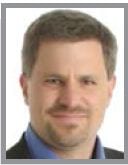Are You Getting Paid What Is Due You? When It Comes To Revenue Maximization, Work Smarter – Not Just Harder
Revenue maximization is a goal of every medical practice. Doctors, in general, are working longer hours and seeing more patients to maintain their individual income in the face of tightening reimbursement and rising medical costs. The results of these efforts, however, can be disappointing if the practice does not have policies and procedures to insure that:
• All charges are captured and billed timely;
• Charges are coded appropriately;
• Daily and monthly balancing procedures are in place; and
• Claims denials are tracked and addressed on a timely basis.
This article offers guidance in the above areas to help you identify opportunities and take corrective action in your practice.
Charge Capture and Billing
Most billing and scheduling software packages have features to ensure that all patient visits are accounted for. Some do this by encounter form control numbers. If encounter form charges are not entered, an exception report will identify that patient and provider. Some automated scheduling systems interface with the billing software to do the same. Every practice should look into these features and implement procedures to monitor this daily. If the controls are not automated, encounter forms can still be tracked by utilizing a manual log that enters beginning and ending form numbers and batch totals for each day.
Hospital surgeries and visits tend to be the most problematic. Many practices utilize Palm Pilots that can be downloaded daily by the doctors. Also, preprinted pads that doctors can carry with them and then submit the following day are helpful. Generally, one nurse who schedules surgeries should be the control person through whom all these encounters should flow. The nurse can log in on a spreadsheet all such encounters and cross-check against the surgical/hospital schedule. Also, the nurse can track subsequent chart documentation, reports, coding, and charge entry to be sure everything is captured.
Office and hospital outpatient visits should generally be billed the following day, unless the practice is awaiting transcription, in which case two to three days should be the norm. Hospital inpatient encounters are generally billed the same day unless discharge dates dictate otherwise. ASC and hospital surgical procedures should be billed within three days. Timely submission of the operative report is critical, since it is the basis for procedural coding.
Procedural Coding
The responsibility for appropriate coding of all procedures rests with the doctor. Doctors knowledgeable in coding make the whole billing process much more efficient. However, most leave this task to support staff. Increasingly, practices are hiring certified procedure coders (CPCs) or paying for support staff to become certified. Continuing education for doctors and support staff in coding, billing, and collection is one of the best investments a medical practice can make. The return on dollars spent is both tangible and intangible. It not only maximizes revenue but also promotes compliance with Medicare and state regulations and private payers. It also reduces claims denials.
Daily/Monthly
Balancing Procedures
Every practice should have mandatory daily balancing procedures. Daily deposits should be reconciled to payments recorded on the computer by an individual independent of collections and posting. Differences should be immediately investigated. Unresolved differences should be reported to the doctors.
As stated previously, utilization of batch totals and logs should be mandatory to assure all charges are captured. At month end, revenue recorded in the general ledger should be reconciled to totals from the billing system, and differences reported to the doctors. Contractual adjustments, bad debts, and other adjustments should be tracked in total dollars and as a percentage of total charges. Unusual amounts and varying trends should be tracked, investigated, and reported.
Claims Denials
Studies show that CMS and private payers reject, on average, 26{06cf2b9696b159f874511d23dbc893eb1ac83014175ed30550cfff22781411e5} to 30{06cf2b9696b159f874511d23dbc893eb1ac83014175ed30550cfff22781411e5} of initial claims submitted by doctors. Of these, between 40{06cf2b9696b159f874511d23dbc893eb1ac83014175ed30550cfff22781411e5} and 50{06cf2b9696b159f874511d23dbc893eb1ac83014175ed30550cfff22781411e5} are never resubmitted. Considering that more than 5 billion claims are submitted annually, the revenue lost by medical practices is astounding. Most doctors have no idea what their own denial rate is.
To begin, every medical practice should track its initial claim denials to determine the extent of the problem. The Medical Group Management Association (MGMA) reports that the best-performing medical groups average 7.1{06cf2b9696b159f874511d23dbc893eb1ac83014175ed30550cfff22781411e5} of initial claims. If your rate is higher than this, you need to institute a formal program for reducing claims denials, tracking denials immediately, reworking and resubmitting these claims, and identifying the underlying causes of these denials to determine corrective action. This should be reviewed monthly with doctors.
The most common causes for claims denials include:
• Shortfalls in patient registration and preauthorization;
• Invalid coding for procedures billed;
• Inappropriate use of modifiers;
• Failure to establish medical necessity;
• Non-covered services;
• Late filing;
• Staffing and billing system limitations; and
• Incomplete or erroneous claim filing.
Establishing a program for identifying and reducing the extent and causes of claims denials and establishing policies and procedures for correct and timely resubmission may require the assistance of an experienced outside consultant. The process may involve some retooling and support staff restructuring.
Equally important is obtaining doctor buy-in to the process and the willingness to commit the necessary resources. Working smarter, not just harder, is the key to getting paid more of what you earn.
Robert J. Grady, CPA, is a senior associate in the Health Care Services Division of Meyers Brothers Kalicka, P.C., Certified Public Accountants and Business Consultants in Longmeadow; (413) 567-6101.


